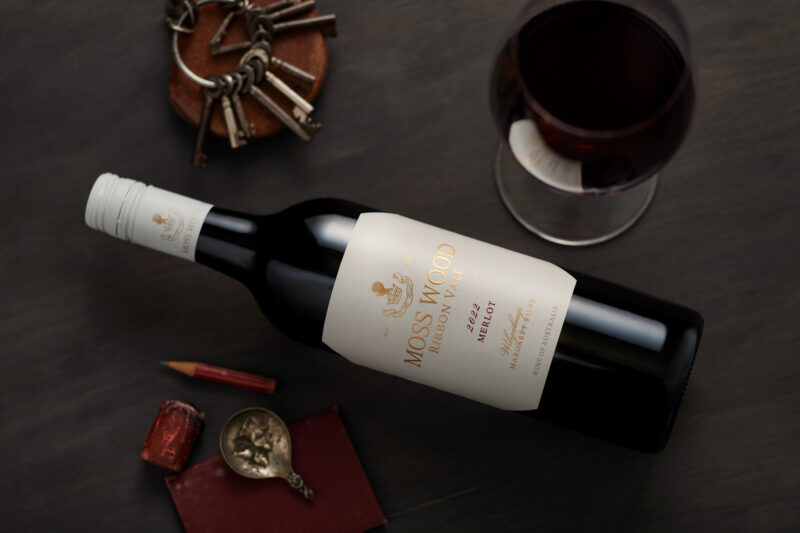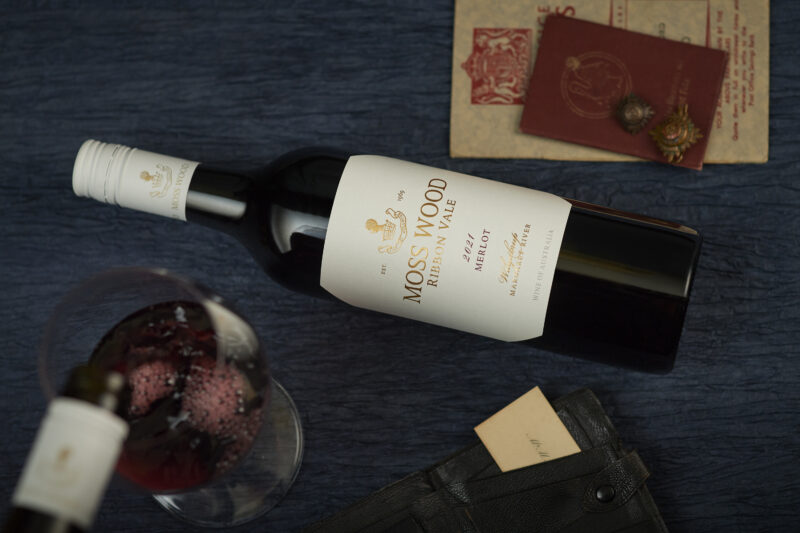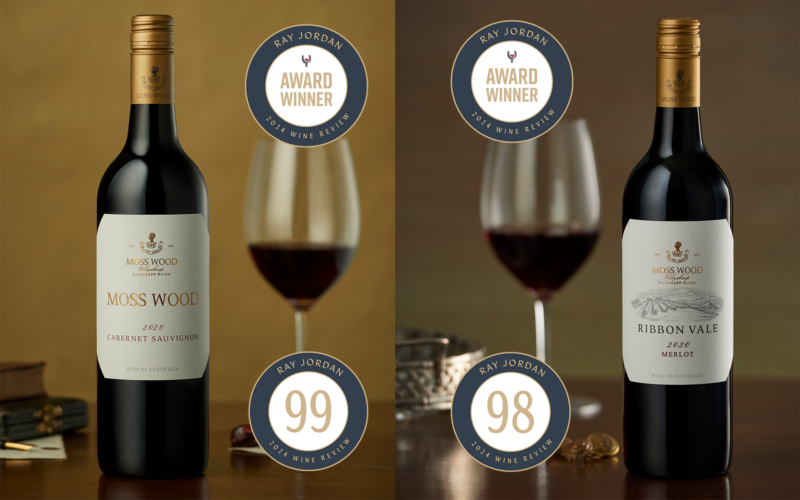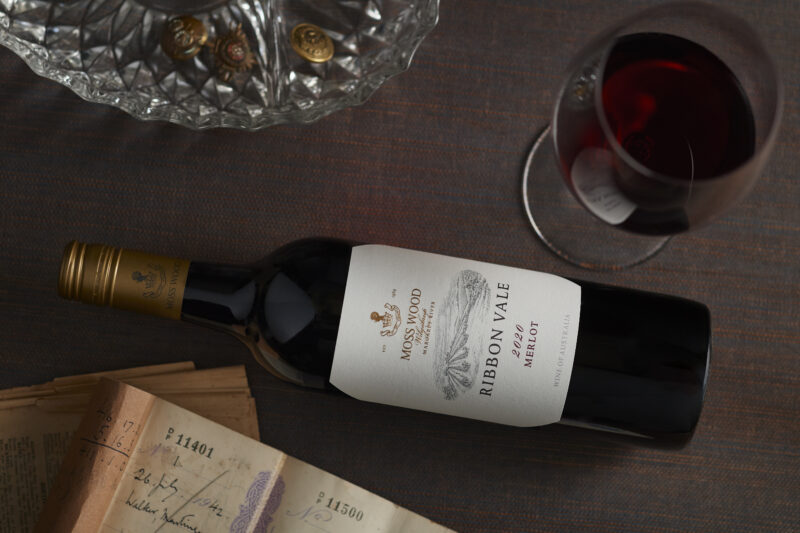Moss Wood Ribbon Vale 2018 Merlot
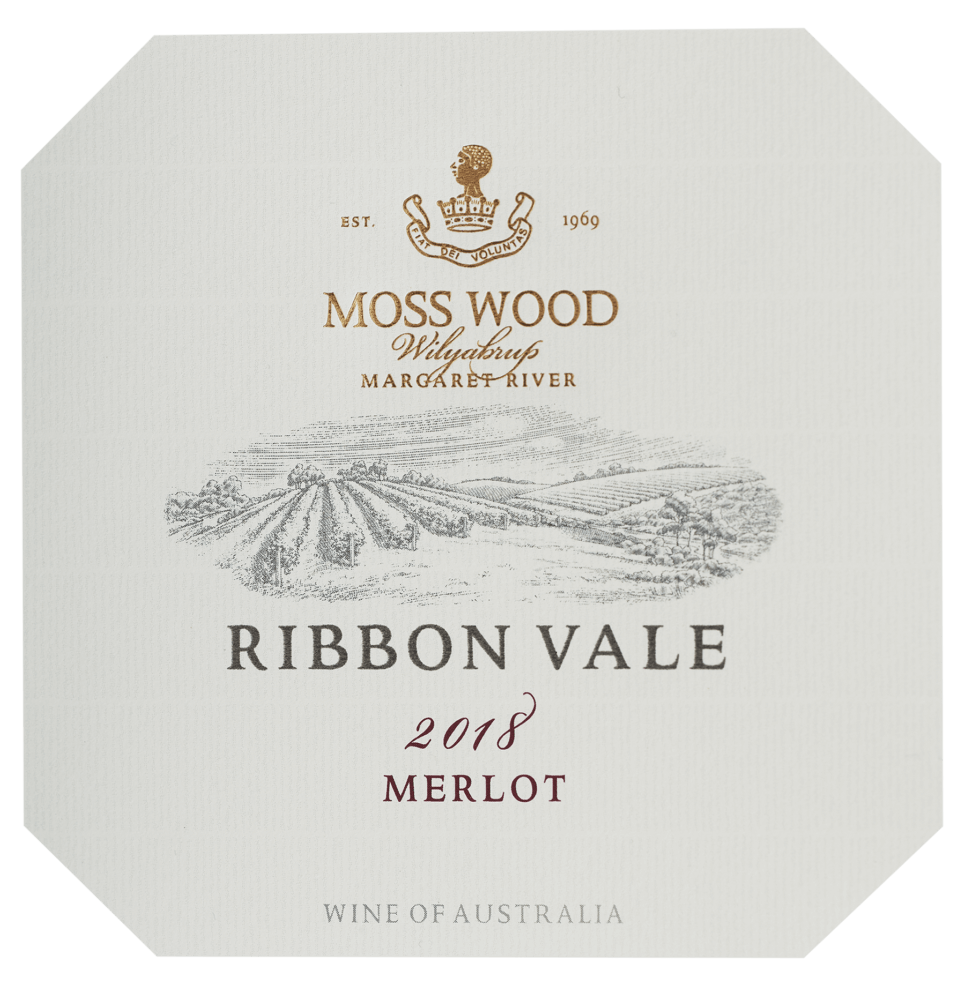
| Wine Facts | |
|---|---|
| Wine Facts Median Harvest Date |
2018 Ribbon Vale Merlot – 18th March, 2018 2018 Ribbon Vale Cabernet Franc – 16th March, 2018 |
| Wine Facts Mean Harvest Ripeness |
2018 Ribbon Vale Merlot – 13.3⁰ Be 2018 Ribbon Vale Cabernet Franc – 13.1⁰ Be |
| Wine Facts Yield |
2018 Ribbon Vale Merlot – 7.38 t/ha 2018 Ribbon Vale Cabernet Franc – 6.55 t/ha |
| Wine Facts Ripening Time from Flowering to Harvest |
2018 Ribbon Vale Merlot – 122 days 2018 Ribbon Vale Cabernet Franc – 119 days |
| Wine Facts Bottled | 10th & 11th August, 2020. |
| Wine Facts Released | 10th November, 2020 |
| Wine Facts Alcohol | 14% |
Wine Facts
-
Median Harvest Date
2018 Ribbon Vale Merlot – 18th March, 2018
2018 Ribbon Vale Cabernet Franc – 16th March, 2018 -
Mean Harvest Ripeness
2018 Ribbon Vale Merlot – 13.3⁰ Be
2018 Ribbon Vale Cabernet Franc – 13.1⁰ Be -
Yield
2018 Ribbon Vale Merlot – 7.38 t/ha
2018 Ribbon Vale Cabernet Franc – 6.55 t/ha -
Ripening Time from Flowering to Harvest
2018 Ribbon Vale Merlot – 122 days
2018 Ribbon Vale Cabernet Franc – 119 days -
Bottled
10th & 11th August, 2020
-
Released
9th November, 2020
-
Alcohol
14%
Moss Wood Ribbon Vale 2022 Merlot – Erin Larkin, The Wine Advocate
The 2022 Ribbon Vale Merlot is from a warm, dry and early vintage; the confluence of these…
Vintage Conditions
The tale of the 2017/18 growing season is delightfully simple. Essentially, benign conditions prevailed nearly all the way such that even Hanrahan wouldn’t have complained!
Rainfall during calendar year 2017 was above average with 1117mm, so there was plenty of moisture in the soil but with a solid 267mm falling during the growing season, the vines were never in danger of being stressed.
During the flowering period for the Cabernet varieties at Ribbon Vale, from 7th November to 12th December, there were only 3 days when the temperature dropped below 8°C, so the only interruptions were caused by rain. Hanrahan might have grumbled with his mates in the congregation when we had showers or drizzle on 14 days and received a total of 50mm of rain, which gave us lighter bunches and commensurately lower yields, the only serious disappointment of the vintage. Cabernet Franc cropped at 6.55 tonnes per hectare, down 17% and Merlot, doing its best to save the team, cropped at 7.38 tonnes per hectare, down only 5%.
At this point, however, even he would stop complaining.
Temperatures during summer and autumn were very enjoyable for those of us working in the vineyard. An absence of sustained hot weather made outdoor activities easy, although the nights were fresh and didn’t provide too many balmy evenings for holiday makers. Apart from one hot day on 14th January when the mercury topped out at 39.1°C, there were very few days when the temperature exceeded 33°C, so the vines were very comfortable indeed.
Given these mild conditions, it’s no surprise the rate of ripening was a bit leisurely. It’s almost as if the vines knew they had plenty of time to enjoy good conditions and were determined to do so. Cabernet Franc used its average 119 days to proceed from flowering to ripeness but Merlot was more casual, taking 3 more days than usual at 122.
This last point is interesting and in all but the warmest years can certainly challenge us. As we proceed into autumn and the average temperature drops accordingly, we often find Ribbon Vale ripening noticeably slower than Moss Wood, a product of its elevated, south-facing location. It gets quite chilly out there, especially overnight, and the vines take longer to warm up and get moving in the morning. We have to be patient and keep an eye on the weather and are happy to leave the fruit out as long as we can, but we always get a bit touchy if rain is looming. We need to be ready to jump in at late notice and this is how it was in 2018. The last pick was on 9th April and over the next 2 weeks, 50mm of rain fell. We couldn’t have left things any longer but the quality was worth the wait.
We were successful in deterring the birds and our fungicide program ensured we had no disease, so each variety produced grapes in excellent condition and which also means the pressure goes on in the winery because we don’t want to spoil all that good work.
Production Notes
Merlot was placed in small, closed tanks for primary fermentation because we apply a slightly different technique. Initially, we chill the juice down to around 10°C and allow some extraction of colour without the presence of alcohol. It’s a technique we use on Pinot Noir but in open tanks. After 48 hours, we seed for primary fermentation with multiple yeast strains and pump the tanks over 3 times per day for extraction. We choose this over hand plunging in open tanks because, for reasons that are not entirely clear, we get better colour, in particular. After 16 days on skins each batch was pressed to stainless steel tank for malolactic fermentation. The time in the fermenter was one or two days less than we normally expect and is an indication of how well balanced the tannins are in the 2018 wines.
For each variety the steps post-MLF were the same – adjusted and racked to 228 litre French oak barrels.
In December 2019, the final blends were assembled after tasting trials.
The Merlot needed just a tiny lift with 5% Cabernet Franc. It had 15% new barrels.
The blended wines were returned to barrel until August 2020 when they were racked to stainless steel and fining trials were carried out. We mentioned above the excellent tannin balance in the 2018 vintage and so, as expected, no finings were necessary. Both wines were then sterile filtered and bottled on 10th and 11th August.
Tasting Notes
Colour and condition
Medium to deep brick red; bright condition.
Nose
Distinctly aromatic, with the full range of Merlot’s red and black fruits. Lots of blackberry, blueberry, plum and cherry, brightened by musk stick confectionery fragrance. Underneath lie earthy complexity of tarry notes, plus toasty oak and leather.
Palate
The theme of generous dark fruit follows through on the palate, where the front and middle are immediately filled with blackcurrant, mulberry and licorice. This sits over a full body and typically firm Merlot tannin structure but the combination is supple and well balanced, something we don’t often see in the young Ribbon Vale Merlots. The finish shows some tarriness and there is also some toasty oak evident.
Cellaring
There is no doubt the fruit concentration and complexity of the 2018 Merlot will see it cellar for several decades, enhancing the wine with tar and leather complexities. It will need at least a decade to show the first signs of this and will become more complete with each year that passes after that. We suspect the challenge for many will be to resist its delicious early appeal but that’s OK, we’re happy for our wines to be enjoyed at any age.

